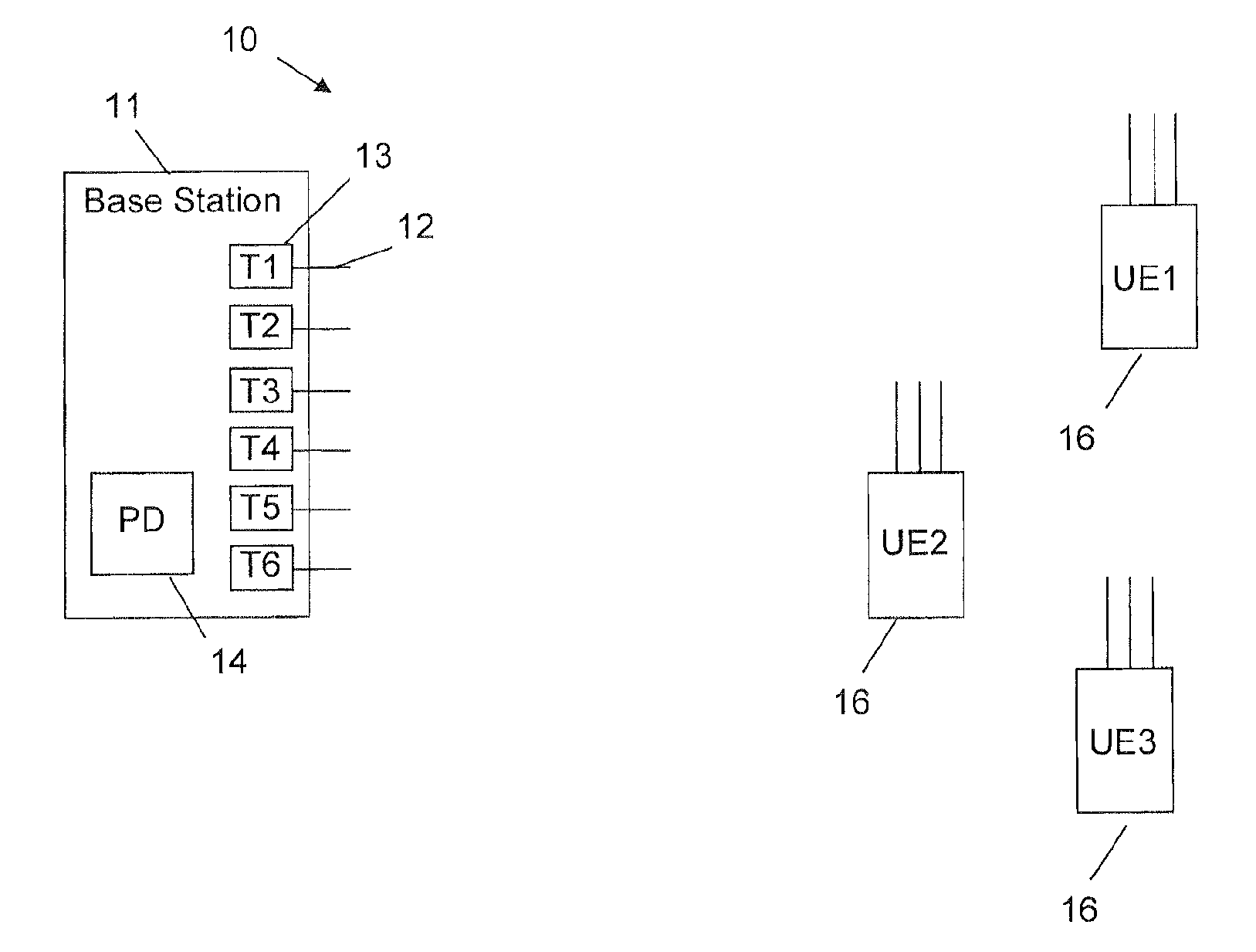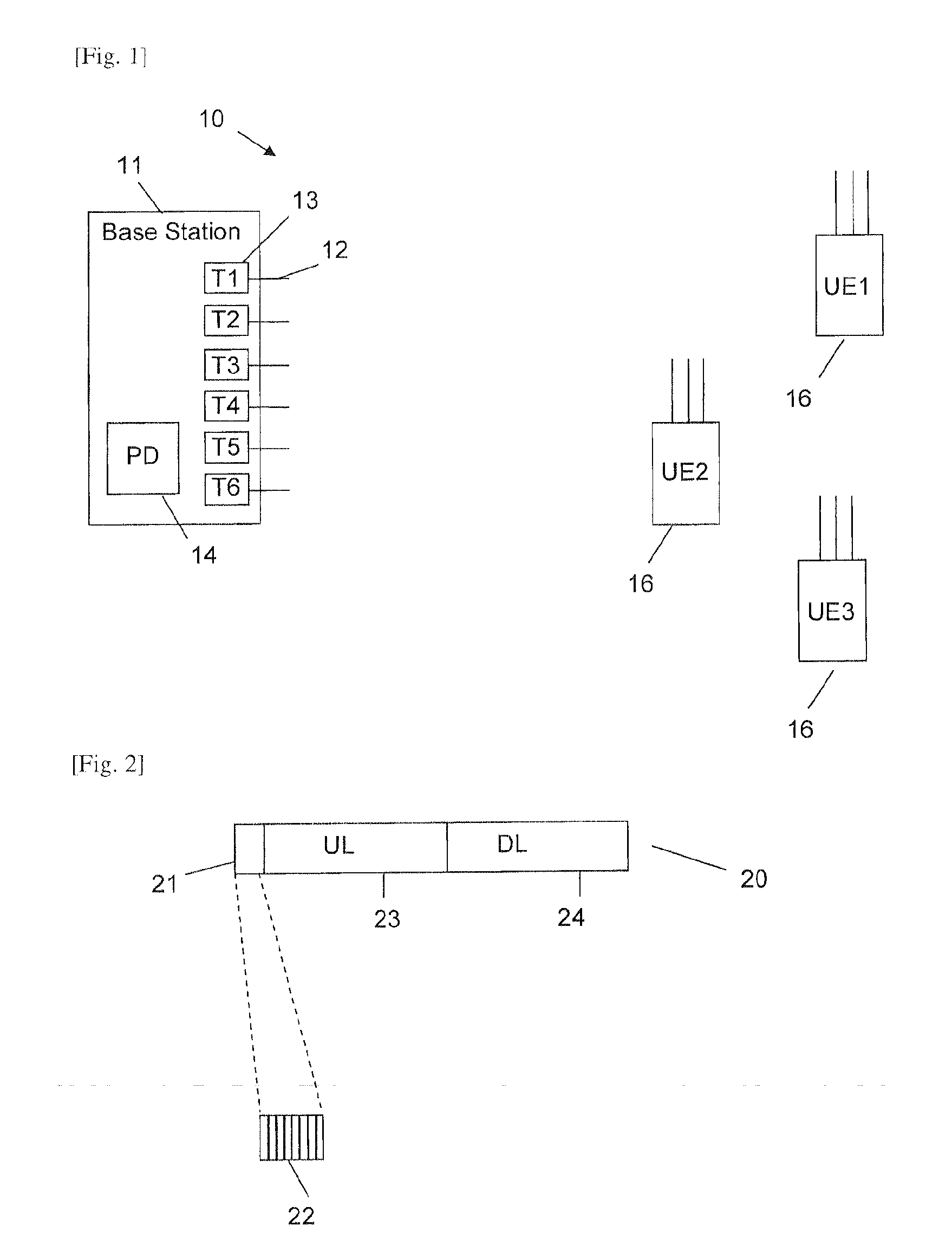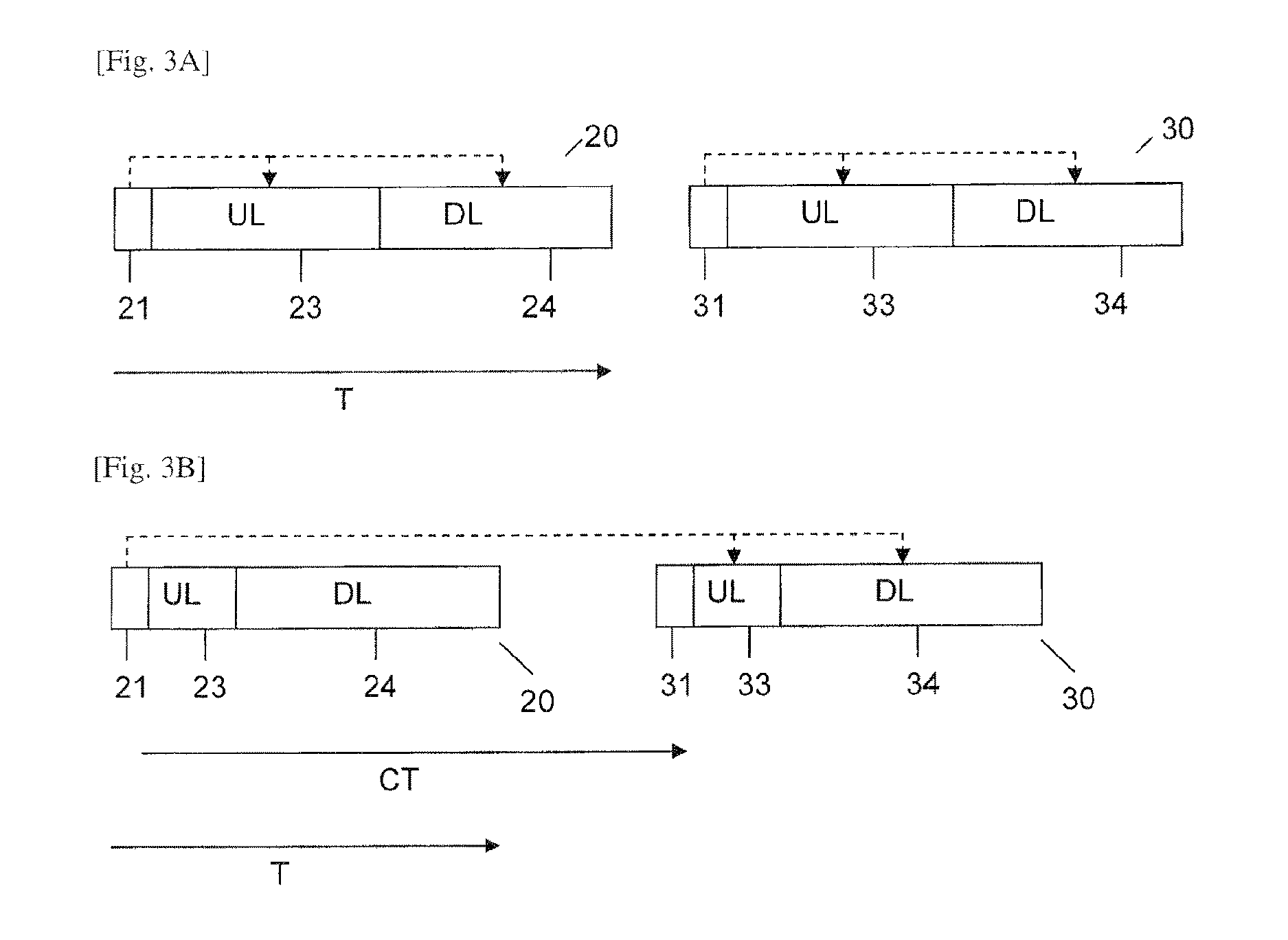Method for operating a base station in a wireless radio network, base station and user equipment
a wireless radio network and wireless radio technology, applied in the direction of digital transmission, transmission path sub-channel allocation, wireless communication, etc., can solve the problems of only changing the relationship between the uplink time slot and the downlink time slot, and erode the validity of the received training sequence, so as to reduce the time duration of the uplink slot
- Summary
- Abstract
- Description
- Claims
- Application Information
AI Technical Summary
Benefits of technology
Problems solved by technology
Method used
Image
Examples
Embodiment Construction
[0024]In the following, exemplary embodiments of the present invention will be described in more detail. It is to be understood that the features of the various exemplary embodiments described herein may be combined with each other unless specifically noted otherwise. Same reference signs in various drawings refer to similar of identical components. Any coupling between components or devices shown in the figures may be a direct or an indirect coupling unless specifically noted otherwise.
[0025]FIG. 1 shows three user equipments 16 (UE1, UE2 and UE3) arranged in an environment 10 of a base station 11. The base station 11 comprises a plurality of antennas 12 and associated transceivers 13 (T1 . . . T6). In FIG. 1 only six antennas 12 and six transceivers 13 are shown for clarity reasons. However, these are only exemplary numbers, and the base station 11 may comprise for example an array of 30 to 100 or even more antennas 12 and associated transceivers 13 arranged for example in a matri...
PUM
 Login to View More
Login to View More Abstract
Description
Claims
Application Information
 Login to View More
Login to View More - R&D
- Intellectual Property
- Life Sciences
- Materials
- Tech Scout
- Unparalleled Data Quality
- Higher Quality Content
- 60% Fewer Hallucinations
Browse by: Latest US Patents, China's latest patents, Technical Efficacy Thesaurus, Application Domain, Technology Topic, Popular Technical Reports.
© 2025 PatSnap. All rights reserved.Legal|Privacy policy|Modern Slavery Act Transparency Statement|Sitemap|About US| Contact US: help@patsnap.com



